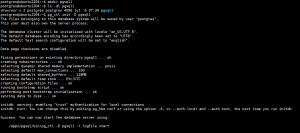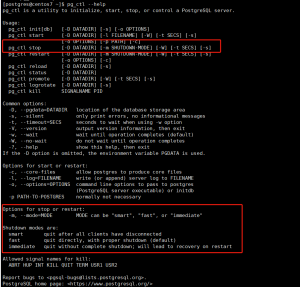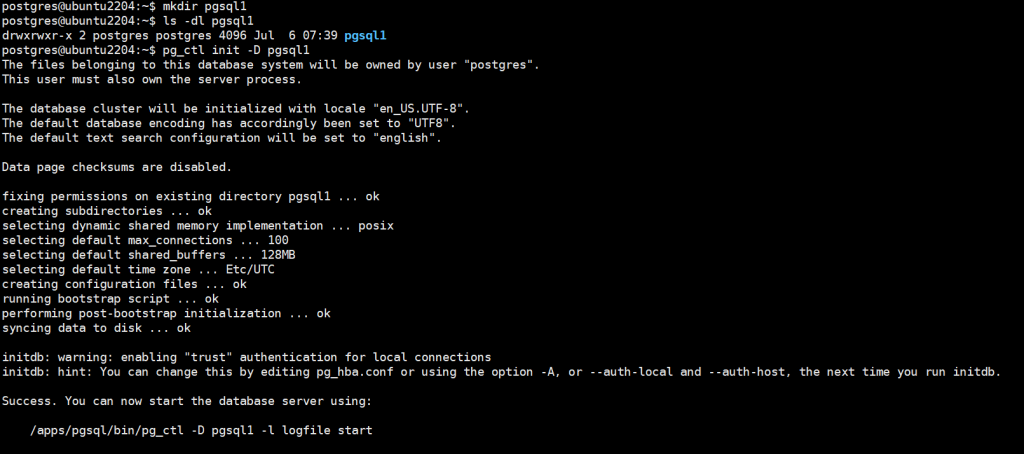1、Ansible 组成
组合INVENTORY、API、MODULES、PLUGINS的绿框,为ansible命令工具,其为核心执行工具
![图片[1]-Ansible-李佳程的个人主页](http://www.lijiach.com/wp-content/uploads/2022/12/image-9.png)
- INVENTORY:Ansible管理主机的清单文件,默认为 /etc/ansible/hosts
- MODULES:Ansible执行命令的功能模块,多数为内置核心模块,也可自定义
- PLUGINS:模块功能的补充,如连接类型插件、循环插件、变量插件、过滤插件等,该功能不常用
- API:供第三方程序调用的应用程序编程接口
2、Ansible 命令执行来源
- USER 普通用户,即SYSTEM ADMINISTRATOR
- PLAYBOOKS:任务剧本(任务集),编排定义Ansible任务集的配置文件,由Ansible顺序依次执行,通常是JSON格式的YML文件
- CMDB(配置管理数据库) API 调用
- PUBLIC/PRIVATE CLOUD API调用
- USER-> Ansible Playbook -> Ansible
3、注意事项
- 执行ansible的主机一般称为管理端, 主控端,中控,master或堡垒机
- 主控端Python版本需要2.6或以上
- 被控端Python版本小于2.4,需要安装python-simplejson
- 被控端如开启SELinux需要安装libselinux-python
- windows 不能做为主控端,只能做为被控制
4、Ansible 安装和常见模块
4.1、包安装
# 查看EPEL源中ansible版本
[root@ansible ~]# yum info ansible
Loaded plugins: fastestmirror
Repodata is over 2 weeks old. Install yum-cron? Or run: yum makecache fast
Determining fastest mirrors
Available Packages
Name : ansible
Arch : noarch
Version : 2.9.27
Release : 1.el7
Size : 17 M
Repo : local_epel
Summary : SSH-based configuration management, deployment, and task execution system
URL : http://ansible.com
License : GPLv3+
Description : Ansible is a radically simple model-driven configuration management,
: multi-node deployment, and remote task execution system. Ansible works
: over SSH and does not require any software or daemons to be installed
: on remote nodes. Extension modules can be written in any language and
: are transferred to managed machines automatically.
[root@ansible ~]# yum install -y ansible
[root@ansible ~]# ansible --version
ansible 2.9.27
config file = /etc/ansible/ansible.cfg
configured module search path = [u'/root/.ansible/plugins/modules', u'/usr/share/ansible/plugins/modules']
ansible python module location = /usr/lib/python2.7/site-packages/ansible
executable location = /usr/bin/ansible
python version = 2.7.5 (default, Oct 14 2020, 14:45:30) [GCC 4.8.5 20150623 (Red Hat 4.8.5-44)]
4.2、pip 安装
pip 是安装Python包的管理器,类似 yum
[root@ansible ~]# yum install -y python3
[root@ansible ~]# pip3 install ansible
[root@ansible ~]# ansible --version5、Ansible 相关文件
5.1、Ansible 配置文件列表
- /etc/ansible/ansible.cfg 主配置文件,配置ansible工作特性,也可以在项目的目录中创建此文件,当前目录下如果也有ansible.cfg,则此文件优先生效,建议每个项目目录下,创建独有的ansible.cfg文件
- /etc/ansible/hosts 主机清单
- /etc/ansible/roles/ 存放角色的目录
5.2、Ansible 主配置文件
# Ansible 的配置文件可以放在多个不同地方,优先级从高到低顺序如下
ANSIBLE_CONFIG #环境变量,目录下的文件必须存在才能生效
./ansible.cfg #当前目录下的ansible.cfg,一般一个项目对应一个专用配置文件,推荐使
用
~/.ansible.cfg #当前用户家目录下的.ansible.cfg
/etc/ansible/ansible.cfg #系统默认配置文件# Ansible 的默认配置文件 /etc/ansible/ansible.cfg ,其中大部分的配置内容无需进行修改
[defaults]
#inventory = /etc/ansible/hosts #主机列表配置文件
#library = /usr/share/my_modules/ #库文件存放目录
#remote_tmp = $HOME/.ansible/tmp #临时py命令文件存放在远程主机目录
#local_tmp = $HOME/.ansible/tmp #本机的临时命令执行目录
#forks = 5 #默认并发数
#sudo_user = root #默认sudo 用户
#ask_sudo_pass = True #每次执行ansible命令是否询问ssh密码
#ask_pass = True
#remote_port = 22
#host_key_checking = False #检查对应服务器的host_key,建议取消此行注释,实
现第一次连
接自动信任目标主机
#log_path=/var/log/ansible.log #日志文件,建议启用
#module_name = command #默认模块,可以修改为shell模块
[privilege_escalation] #普通用户提权配置
#become=True
#become_method=sudo
#become_user=root
#become_ask_pass=False
# 创建项目专用配置文件
[root@ansible ~]# mkdir /data/ansible/test -p
[root@ansible ~]# cd /data/ansible/test/
[root@ansible test]# touch ansible.cfg
[root@ansible test]# ansible --version
ansible 2.9.27
config file = /data/ansible/test/ansible.cfg
configured module search path = [u'/root/.ansible/plugins/modules', u'/usr/share/ansible/plugins/modules']
ansible python module location = /usr/lib/python2.7/site-packages/ansible
executable location = /usr/bin/ansible
python version = 2.7.5 (default, Oct 14 2020, 14:45:30) [GCC 4.8.5 20150623 (Red Hat 4.8.5-44)]
5.3、Inventory 主机清单文件
ansible的主要功用在于批量主机操作,为了便捷地使用其中的部分主机,可以在inventory 主机清单文件中将其分组组织
默认的inventory file为 /etc/ansible/hosts
inventory file可以有多个,且也可以通过Dynamic Inventory来动态生成
- 生产建议在每个项目目录下创建项目独立的hosts文件
- 通过项目目录下的ansible.cfg文件中的 inventory = ./hosts实现
主机清单文件格式
inventory文件遵循INI文件风格,中括号中的字符为组名。可以将同一个主机同时归并到多个不同的组中
此外,当如若目标主机使用了非默认的SSH端口,还可以在主机名称之后使用冒号加端口号来标明
如果主机名称遵循相似的命名模式,还可以使用列表的方式标识各主机
Inventory 参数说明
ansible_ssh_host
# 将要连接的远程主机名.与你想要设定的主机的别名不同的话,可通过此变量设置.
ansible_ssh_port
# ssh端口号.如果不是默认的端口号,通过此变量设置.这种可以使用 ip:端口192.168.1.100:2222
ansible_ssh_user
# 默认的 ssh 用户名
ansible_ssh_pass
# ssh 密码(这种方式并不安全,我们强烈建议使用 --ask-pass 或 SSH 密钥)
ansible_sudo_pass
# sudo 密码(这种方式并不安全,我们强烈建议使用 --ask-sudo-pass)
ansible_sudo_exe (new in version 1.8)
# sudo 命令路径(适用于1.8及以上版本)
ansible_connection
# 与主机的连接类型.比如:local, ssh 或者 paramiko. Ansible 1.2 以前
默认使用 paramiko.1.2 以后默认使用 'smart','smart' 方式会根据是否支持 ControlPersist,
来判断'ssh' 方式是否可行.
ansible_ssh_private_key_file
# ssh 使用的私钥文件.适用于有多个密钥,而你不想使用 SSH 代理
的情况.
ansible_shell_type
#目标系统的shell类型.默认情况下,命令的执行使用 'sh' 语法,可设置为
'csh' 或 'fish'.
ansible_python_interpreter
# 目标主机的 python 路径.适用于的情况: 系统中有多个 Python,
或者命令路径不是"/usr/bin/python",比如 \*BSD, 或者 /usr/bin/python 不是 2.X 版本的
Python.之所以不使用 "/usr/bin/env" 机制,因为这要求远程用户的路径设置正确,且要求 "python"
可执行程序名不可为 python以外的名字(实际有可能名为python26).与
ansible_python_interpreter 的工作方式相同,可设定如 ruby 或 perl 的路径....# 范例
192.168.1.1
[webserver]
192.168.1.11
192.168.1.12
[dbserver]
192.168.1.21
192.168.1.22# 组嵌套
192.168.1.1
[webserver]
192.168.1.11
192.168.1.12
[dbserver]
192.168.1.21
192.168.1.22
# 定义testsrvs组中包括两个其它分组,实现组嵌套
[testsrvs:children]
webserver
dbserver# 基于用户名和密码的ssh连接主机清单
[test]
192.168.1.11 ansible_connection=local #指定本地连接,无需ssh配置
# 每个主机分别指定用户和密码,ansible_connection=ssh 需要StrictHostKeyChecking no 或者host_key_checking = False
192.168.1.12 ansible_connection=ssh ansible_ssh_port=2222 ansible_ssh_user=test ansible_ssh_password=123456
192.168.1.13 ansible_ssh_user=root ansible_ssh_password=123456
# 对每个分组的所有主机统一定义用户和密码,执行ansible命令时显示别名,如web01
[websrvs]
web01 ansible_ssh_host=192.168.1.51
web02 ansible_ssh_host=192.168.1.52
[websrvs:vars]
ansible_ssh_password=1234566、Ansible相关工具
- /usr/bin/ansible 主程序,临时命令执行工具
- /usr/bin/ansible-doc 查看配置文档,模块功能查看工具,相当于man
- /usr/bin/ansible-playbook 定制自动化任务,编排剧本工具,相当于脚本
- /usr/bin/ansible-pull 远程执行命令的工具
- /usr/bin/ansible-vault 文件加密工具
- /usr/bin/ansible-console 基于Console界面与用户交互的执行工具
- /usr/bin/ansible-galaxy 下载/上传优秀代码或Roles模块的官网平台
利用ansible实现管理
- Ansible Ad-Hoc 即利用ansible命令,主要用于临时命令使用场景
- Ansible playbook 主要用于长期规划好的,大型项目的场景,需要有前期的规划过程
ansible 使用前准备
ansible 相关工具大多数是通过ssh协议,实现对远程主机的配置管理、应用部署、任务执行等功能
建议:使用此工具前,先配置ansible主控端能基于密钥认证的方式联系各个被管理节点
利用sshpass批量实现基于key验证脚本
vim /etc/ssh/ssh_config
StrictHostKeyChecking no
cat hosts.list
192.168.1.11
192.168.1.12
192.168.1.13
vim push_ssh_key.sh
#!/bin/bash
rpm -q sshpass &> /dev/null || yum -y install sshpass
[ -f /root/.ssh/id_rsa ] || ssh-keygen -f /root/.ssh/id_rsa -P ''
export SSHPASS=root123
while read IP;do
sshpass -e ssh-copy-id -o StrictHostKeyChecking=no $IP
done < hosts.list#!/bin/bash
IPLIST="
192.168.1.11
192.168.1.12
192.168.1.13"
rpm -q sshpass &> /dev/null || yum -y install sshpass
[ -f /root/.ssh/id_rsa ] || ssh-keygen -f /root/.ssh/id_rsa -P ''
export SSHPASS=123456
for IP in $IPLIST;do
{ sshpass -e ssh-copy-id -o StrictHostKeyChecking=no $IP; } &
done
wait
7、ansible-doc
此工具用来显示模块帮助,相当于man
ansible-doc [options] [module...]
-l, --list #列出可用模块
-s, --snippet #显示指定模块的playbook片段[root@ansible ~]# ansible-doc --help
usage: ansible-doc [-h] [--version] [-v] [-M MODULE_PATH]
[--playbook-dir BASEDIR]
[-t {become,cache,callback,cliconf,connection,httpapi,inventory,lookup,netconf,shell,module,strategy,vars}]
[-j] [-F | -l | -s | --metadata-dump]
[plugin [plugin ...]]
plugin documentation tool
positional arguments:
plugin Plugin
optional arguments:
--metadata-dump **For internal testing only** Dump json metadata for
all plugins.
--playbook-dir BASEDIR
Since this tool does not use playbooks, use this as a
substitute playbook directory.This sets the relative
path for many features including roles/ group_vars/
etc.
--version show program's version number, config file location,
configured module search path, module location,
executable location and exit
-F, --list_files Show plugin names and their source files without
summaries (implies --list)
-M MODULE_PATH, --module-path MODULE_PATH
prepend colon-separated path(s) to module library (def
ault=~/.ansible/plugins/modules:/usr/share/ansible/plu
gins/modules)
-h, --help show this help message and exit
-j, --json Change output into json format.
-l, --list List available plugins
-s, --snippet Show playbook snippet for specified plugin(s)
-t {become,cache,callback,cliconf,connection,httpapi,inventory,lookup,netconf,shell,module,strategy,vars}, --type {become,cache,callback,cliconf,connection,httpapi,inventory,lookup,netconf,shell,module,strategy,vars}
Choose which plugin type (defaults to "module").
Available plugin types are : ('become', 'cache',
'callback', 'cliconf', 'connection', 'httpapi',
'inventory', 'lookup', 'netconf', 'shell', 'module',
'strategy', 'vars')
-v, --verbose verbose mode (-vvv for more, -vvvv to enable
connection debugging)
See man pages for Ansible CLI options or website for tutorials
https://docs.ansible.com#列出所有模块
ansible-doc -l
#查看指定模块帮助用法
ansible-doc ping
#查看指定模块帮助用法
ansible-doc -s ping# 查看指定的插件
[root@ansible ~]#ansible-doc -t connection -l
[root@ansible ~]#ansible-doc -t lookup -l
© 版权声明
文章版权归作者所有,未经允许请勿转载。
THE END



















